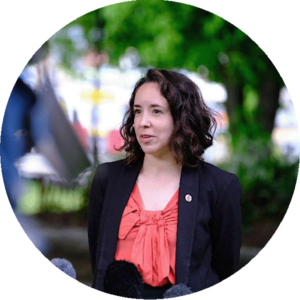
Speech and Language Pathologists (SLPs) help kids communicate better, give them the confidence to engage with the world, and develop the skills to get the best start in life. But Tasmanians are facing a chronic shortage of SLPs, and we’re facing an uphill battle to reverse the long-term undervaluing of their skills and experience.
This week, CPSU General Secretary Thirza White came forward with her own personal experience of the chronic underfunding and understaffing of Speech & Language Pathologists in public schools:
“Arlo has been on the waiting list since he was two. He is now eight years old – and due to the chronic underfunding of both speech pathologists and school psychologists, we have had to seek assessments through the private sector and therapy via telehealth from the mainland.”
“He was lucky to get some support through a school-based program but is still considered ‘underserviced’, receiving some limited support but in need of much more.”
“The heartbreaking part is that for my son, earlier assessment and intervention would have assisted him with his speech, which would have avoided some of the challenges we are now facing in his literacy skills.”
Tasmania’s public education workforce is too stretched to meet demand, with long-term vacancies across the state meaning far too many children are being left to slip through the cracks. In 2022, 1 in 3 Speech and Language Pathology roles in Tasmanian public schools and learning centres were vacant. That left just 31 SLPs to service every public primary school and support school in the state – a ratio of 116:1.
CPSU Delegate and SLP Sarah Green sees the toll workforce shortages take on both workers and families alike.
“We know that these children are much more likely to have troubles learning to read and write and can go on to have academic difficulties in later years,” says Sarah.
Between 2017 and 2022, just 2 out of 20 terms Sarah worked were fully staffed in her region, the Western District (which covers the Forth in the East, Strahan in the South West and Smithton in the North West). The underfunding of SLPs shifts the cost on to families. Not just the financial costs, but also the missed opportunities for early intervention – where it can make the biggest difference – and the impact this can have later in life.
“Assessments through the private sector can cost thousands and ongoing therapy costs around $195 an hour upwards, this is simply unaffordable to most and adding great financial stress to many family budgets, at a time when we know families are already doing it tough,” says Thirza.
“The frustrating part is that the solutions are there to help tackle this problem. By offering a market allowance we could lift the wages of these in-demand professionals to help recruit and retain them.”
As the union for Allied Health Professionals in Tasmanian public schools and other government agencies, the CPSU is standing up for better conditions to recruit, train and retain the workers our communities need. If you’re an AHP, get involved by joining today.
Did you know? At a minimum 1 in 8 Tasmanian primary school students have a communication disorder of some kind.
To celebrate Speech Pathology Week, we want you to share your story of how Speechies have positively impacted you or a loved one; or tell us how you got your start as a Speechie and what drives you to keep going, despite the challenges. Share your story at communications@tas.cpsu.com.au.








